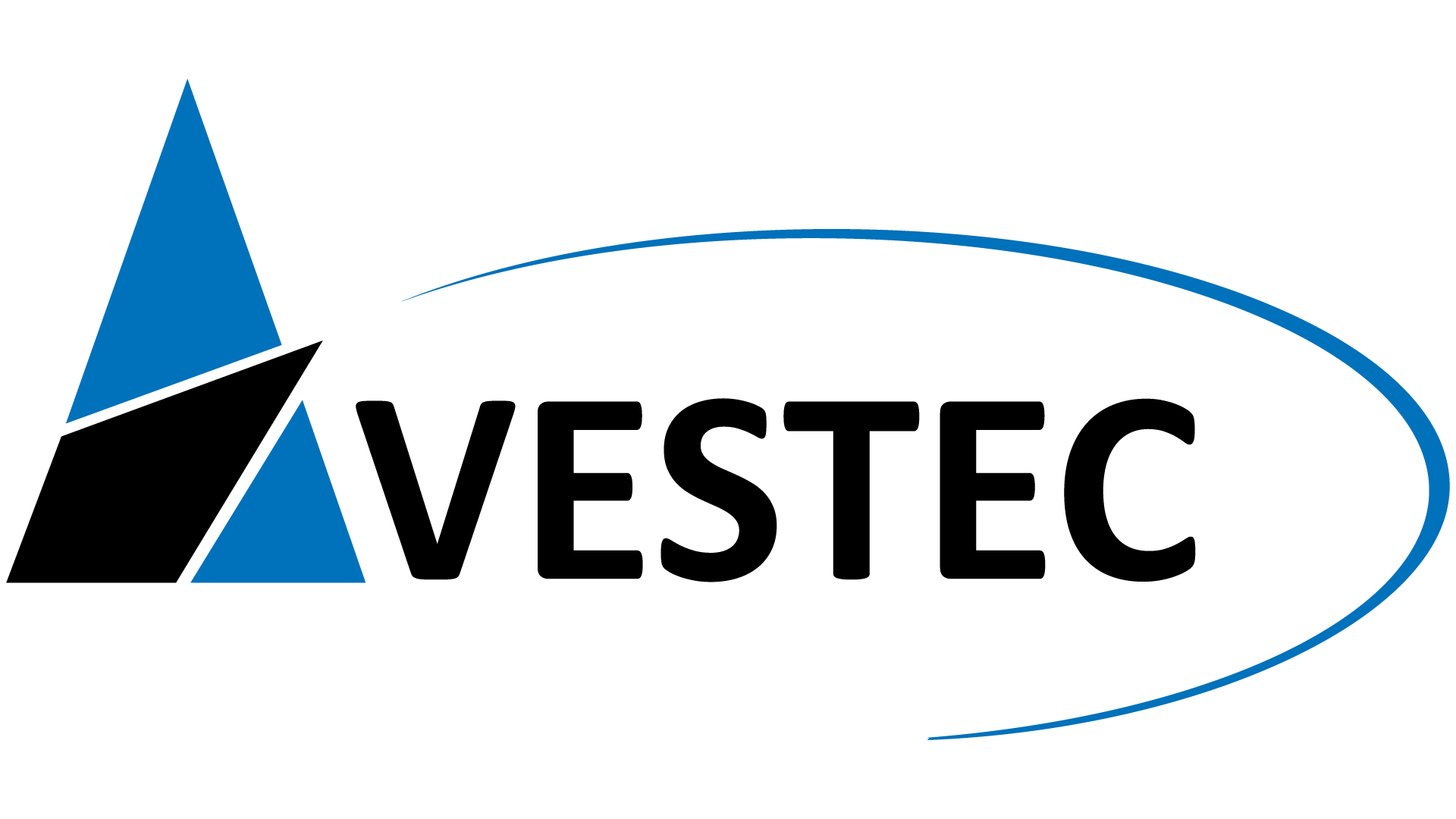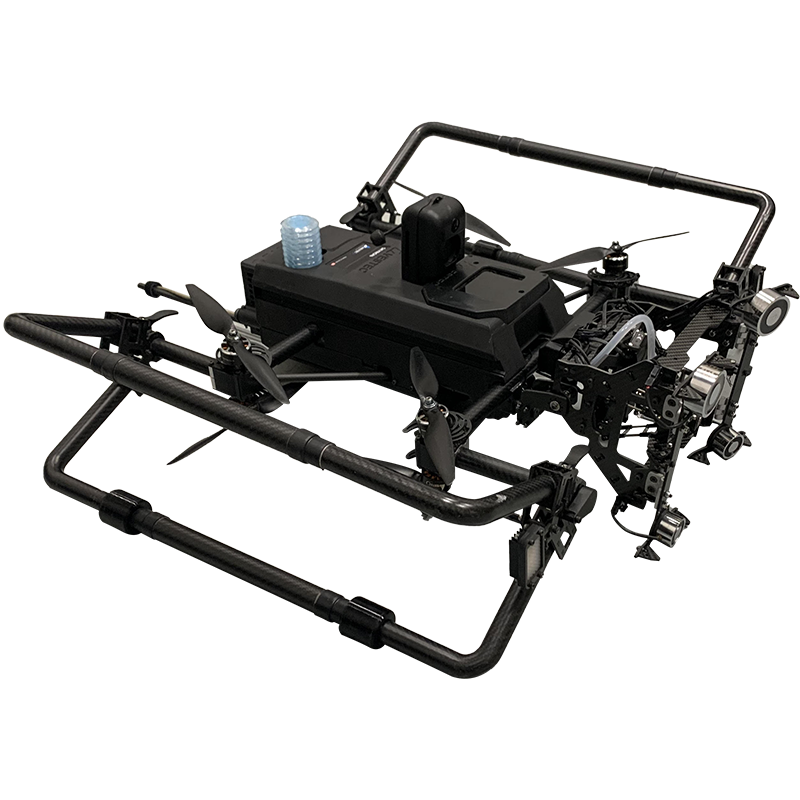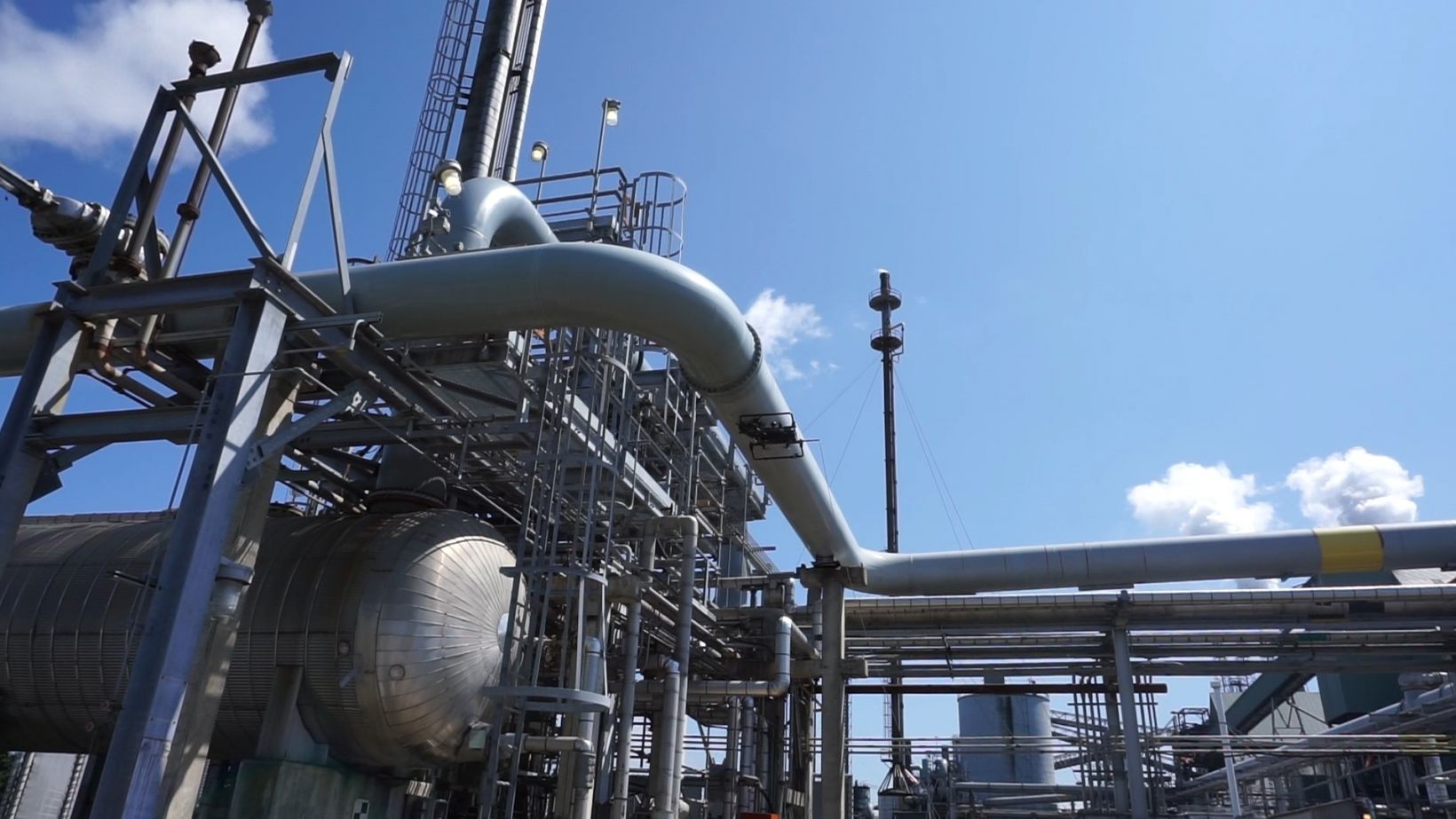In recent years, the integration of aerial robots (drones) with ultrasonic thickness gauges has transformed nondestructive (NDT) inspection processes across various industries, such as oil and gas. Inspecting structures and equipment in this sector often involves working at heights, which poses significant risks to human safety.
Drones equipped with ultrasonic thickness gauges—known as ultrasonic testing (UT) drones—offer a safer alternative by eliminating the need for human personnel to perform the testing directly. The drone can access and inspect elevated structures, reducing the risk of falls, slips, or other accidents associated with working at heights.
Drones have significantly increased safety during NDT inspections at height.
In this post, we will explore one category of UT drones: the tethered ones. Tethered drones are a type of drone physically connected to a power source on the ground. Let’s take a closer look at the benefits tethered UT drones offer asset owners and inspection service providers (ISPs).
Conducting Detailed Ultrasonic Thickness Measurements via Drone
 | Avestec Technologies Inc., a tech company based out of Burnaby, British Columbia, Canada, is a leading provider of intelligent flying robots for remote NDT inspections of assets in various industries. They are mainly active in the oil and gas industry both onshore and offshore, with a focus on thickness measurements and corrosion inspections. |
Their SKYRON UT, a tethered drone equipped with the 38DL PLUS™ ultrasonic thickness gauge from Evident, helps increase the safety and accuracy of inspection for both ISPs and asset owners. Inspecting oil and gas infrastructures typically involves shutting down operations temporarily to ensure worker safety. This downtime results in significant financial losses for companies. With the SKYRON UT, setup time is short. Inspections can be completed in a single day while shutdowns are rarely needed, minimizing downtime and maximizing productivity.
Weighing about 7 kg or 15 lbs (total width of 80 cm or 31.5 in.), the SKYRON UT can perform detailed inspections in complex structures and environments, such as confined spaces and stacks, and even in harsh weather conditions. The SKYRON UT first prepares the surface by cleaning it from dust, debris, and rust. Then its robotic arm with a ±90° rotation and electromagnetic hinge mechanism attaches the robot to vertical, horizontal, angular, and curved surfaces (such as elbows and piping) for contact-based inspections. This provides a stable platform to take readings.
The SKYRON UT operates in complex environments such as confined spaces.
Thanks in part to the remote UT sensor configuration, the SKYRON UT can perform surface scans with 25 grids in a 2 × 2 in. window. Data is collected in real time with low latency, and the results are transmitted to the ground station, where it can be analyzed promptly thanks to the automated report generation feature. This immediate access to inspection results enables rapid decision-making and the implementation of any necessary maintenance or repairs without delays.
There are tangible benefits of using the SKYRON tethered drone equipped with the 38DL PLUS thickness gauge. Flight time is unlimited thanks to the constant power supply, which is essential for many projects where battery-based operation would be impractical or inefficient. The constant power supply also facilitates higher payload capacity, which enables integration of different sensory packages (e.g., advanced NDT, PAUT, gas sensor) and different robotic features.
The SKYRON UT tethered drone is versatile and facilitates integration with different sensors and features. It offers safe operation and no fly away (in Canadian regulations, operating a tethered drone does not require any specific certificate due to its emphasis on safety). It also helps ensure accurate contact-based inspections of critical infrastructures.
The SKYRON UT can maneuver near the structures, performing precise thickness measurements and corrosion inspections. The drone can access and operate in hard-to-reach or unsafe environments, making it an asset for challenging applications in confined spaces, stacks, wide temperature ranges, and non-line-of-sight inspections.
Selecting a Trustworthy Thickness Gauge for the Tethered UT Drone
So, why did Avestec chose to integrate the 38DL PLUS thickness gauge into their drone? Credibility of the instrument in the industry was of the essence, and the 38DL PLUS gauge is widely adopted and recognized in the NDT industry. The gauge offers reliable, accurate measurement results. It is user friendly, intuitive, and has a high acceptance rate by users. Moreover, the gauge is compact and lightweight for drone inspections. What also tipped the scales is the customer service Evident provides, as well as the partnership opportunities we offer.
When integrating the 38DL PLUS gauge into the drone, Avestec performed customization work and removed unused parts and features. They also developed a proprietary communication interface called Avesoft™. This interface enables remote control of the 38DL PLUS gauge.
Operating the UT Drone: What Skills Are Required to Use the SKYRON UT?
Operating the SKYRON UT requires two people: an inspector and a pilot. Training is also required, and Avestec provides online and in-person training for pilots. Typically, inspectors using the SKYRON UT are Level II. Required skills could also be defined by service companies or asset owners. SKYRON operation is validated with most of the asset owners and certified by many safety and risk management advisors for the maritime and offshore industries.
Tethered UT Drones Drive Cost Savings and Improved Asset Management
Using tethered drones with ultrasonic thickness gauges in the oil and gas industry brings significant cost and time savings and improves asset management. The ability to conduct inspections without shutting down operations reduces the revenue loss associated with downtime. Moreover, the accurate assessments provided by the drones enable proactive maintenance and targeted repairs, preventing costly failures or unplanned shutdowns.
By identifying potential issues at an early stage, companies can allocate resources more efficiently and prioritize maintenance activities based on the severity of the findings. This proactive approach to asset management helps optimize operational costs, increase equipment reliability, and meet compliance with industry regulations.
Using the SKYRON tethered drone with thickness gauges brings both cost and time savings.
Key Takeaways on Tethered UT Drone Inspections
Tethered drones equipped with ultrasonic thickness measurement devices have proven to be invaluable, especially in the oil and gas industry where working at height presents significant risks. By using these advanced technologies, asset owners and ISPs can mitigate safety hazards, enhance inspection efficiency, and improve asset management. The accurate and real-time data collected by the UT drone enables informed decision-making, reducing downtime and optimizing maintenance efforts.
As the oil and gas industry continues to prioritize safe, efficient, and cost-effective operations, the integration of tethered UT drones is poised to play an increasingly vital role in helping ensure the integrity and productivity of critical infrastructure.
Related Content
Ultrasonic Drone Inspections Take NDT Safety to New Heights
Look, Up in the Sky—Aerial Robots Autonomously Measure the Thickness of Steel




